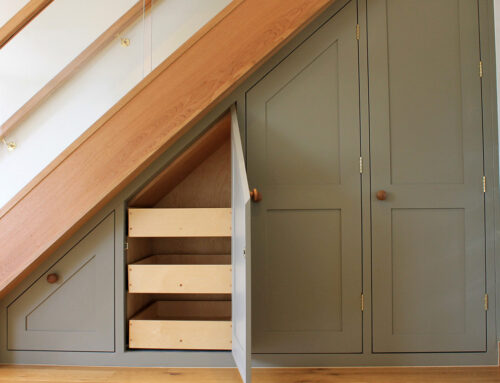Medullary Rays in Oak: Nature’s Signature in Every Handmade Oak Staircase Component
When it comes to staircase renovations, oak remains a popular choice — not only for its strength and durability but also for its beautiful natural features. Among these, one of the most striking and often misunderstood characteristics is the appearance of medullary rays.
In this post, we’ll explore what medullary rays are, how they contribute to the aesthetic of an oak handrail or oak balustrade, and why they’re a hallmark of craftsmanship in the handmade oak staircase components we create.
What Are Medullary Rays?
Medullary rays are natural structures found in oak and a few other hardwoods. They appear as silvery, reflective streaks or flecks running across the grain, especially prominent when the wood is quarter-sawn. These rays are made up of cells that transfer nutrients horizontally through the tree, and their visibility is purely a result of how the timber is cut and prepared.
At Hambledon Staircases, we embrace these features as part of the character and charm of a truly bespoke staircase. We regard medullary rays as nature’s signature — unique, unpredictable, and impossible to replicate artificially. We love that they make each staircase different and we love to see this quality in our staircase components.
Why Quarter-Sawn Oak Is Ideal for Staircase Renovations
For many of our clients undertaking staircase renovations, the goal is to blend timeless beauty with functional quality. Quarter-sawn oak is particularly well suited for this:
- Visual Appeal: The medullary rays add depth, shimmer, and a distinctive figure that enhances the elegance of any oak handrail or oak balustrade.
- Stability: Quarter-sawn boards are less prone to warping and shrinkage — ideal for the structural demands of a handmade oak staircase.
- Longevity: The grain structure gives the wood increased durability, making it a wise investment for homes of any age or style.
Incorporating Medullary Rays Into Your Staircase Design
When designing a handmade oak quality staircase components, we often highlight medullary rays in key areas where their visual impact can be appreciated — such as the oak balustrade, treads, and handrails. Whether you prefer a natural oiled finish that brings out the rays’ shimmer, or a more contemporary tone that contrasts with glass or painted elements, the result is always full of character.
Every piece of oak we select is chosen not only for its quality but for its natural beauty. No two pieces are ever the same — making your staircase completely unique to your home.
A Touch of Tradition in a Modern Renovation
While medullary rays are often associated with antique furniture or heritage joinery, they can work just as beautifully in modern interiors. In fact, many of our clients seek out these natural features specifically for their subtle elegance and visual interest.
Combining medullary rays with modern elements — such as glass panels or minimalist profiles — results in a staircase that feels both grounded in tradition and completely contemporary.
Let’s Design Your Oak Staircase
If you’re planning a staircase renovation, and you’re drawn to the timeless appeal of oak, we’d love to discuss how we can incorporate its natural features — including medullary rays — into your design.
Whether you’re after a classic oak balustrade, a sleek oak handrail, or an entirely handmade oak staircase, we’re here to guide you through every step.
Contact us today to arrange a consultation and discover the difference that craftsmanship — and character — can make in your home.
Take a look at our all oak staircases, our oak and glass staircases and our partially painted staircases.

A Carpenter’s Wife Blog
Nick and I share a passion for creativity and design. We have renovated several houses together and as I was regularly drafted in to help with his carpentry work. It was a natural step to go into business together. For many years this was an informal arrangement with me learning on my feet, including CAD, web design, tax and admin. I was itching to get involved practically so it wasn’t long before I joined Nick on-site.
We’re very lucky to enjoy our time working together. My blog is a reflection on what we are doing, what we have learnt and where we are going. It’s nice to keep a written record of our journey together and life in Dorset with three young children.





